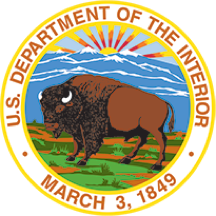A five-step plan for communicating with leadership
How to engage leadership personally, adapt communication styles, and choose appropriate timing for effective interactions and feedback.
54 posts
How to engage leadership personally, adapt communication styles, and choose appropriate timing for effective interactions and feedback.
It has been a year since USA.gov and USAGov en Español were relaunched using human-centered design principles. Using task backlog, the USAGov team has addressed content gaps, improved discoverability, and implemented technical updates. Through usability tests, visitor comments, and click behavior the team was able to unravel and respond to user feedback and unmet needs, leading to noticeable increases in visitor satisfaction and task accomplishment. Moving forward, the focus will shift to enhancing public engagement with the government, improving the search for benefits-related content, and exploring interactive and personalized user experiences.— via USA.gov

The Federal Emergency Management Agency Office of External Affairs is convening risk and crisis communicators and community leaders who are on the front-line of the climate and emerging hazard crises. Attend the free, June 10, 2024, summit virtually, or in Washington, DC. The agenda includes: the sharing invaluable tools and insights, how to implement culturally competent and accessible communications, how to integrate behavior change strategies, and more. An ASL interpreter will be provided.— via Federal Emergency Management Agency

Every day, live agents at USA.gov’s Public Experience (PX) Contact Center answer questions from the public about government benefits and services. Learn how the PX Contact Center develops a workforce of excellent agents, using immersive onboarding, tailored and continuous training, feedback loops, and calibration meetings to empower their agents to deliver accurate information. USA.gov’s system for employee and contact center management ensures that every customer interaction leaves a lasting impact.— via USA.gov

Learn how the Open Data, Design, and Development (ODDD) team at the Department of the Interior (DOI) transitioned from Google Analytics - Universal Analytics to Google Analytics 4! Discover how the ODDD team coordinated with the Digital Analytics Program, developed explorations (instead of custom reports), and set up their own DOI agency property.— via Office of Natural Resources Revenue

Each year, more than 400 million individuals, families, businesses, organizations, and local governments get information and services from about 430 federal agencies and sub-agencies. The Biden-Harris administration is driving a bold vision for how government agencies serve their customers digitally with OMB’s ten-year roadmap for a modern digital experience. Agencies have already made significant strides. Learn about recent successes by the IRS, CDC, NASA, and FEMA, and how OMB will continue to collaborate with agencies to ensure ongoing improvement in digital government services.— via The White House

How well do 18F software development practices work? The 18F team reflected on a recent project for the Cybersecurity and Infrastructure Security Agency (CISA) .gov registry to gauge the effectiveness of six recommendations aligned with what they actually did.— via 18F

The Open Data, Design, and Development (ODDD) team has replaced signed consent forms with a more accessible user research agreement process, offering multiple opt-in points. This ensures informed consent and participant autonomy. Explore why and how the ODDD team implemented this comprehensive participant consent process in their user research.— via Office of Natural Resources Revenue

Each month, USAGov’s content designers spend many hours ensuring that the content on USA.gov and USAGov en Español is up-to-date, accurate, and meets user needs. Learn how their team does holistic reviews of each topic section based on a rolling calendar with the goal of updating all content at least every 6 months.— via USA.gov

The Biden-Harris President’s Management Agenda (PMA) emphasizes an effective, equitable and accountable government. As part of this effort, the General Services Administration (GSA) is conducting a study on the equity of remote identity proofing. The study aims to assess and improve the accessibility and equity of remote identity verification technologies such as facial matching systems. Learn more about the context, purpose, and progress of the study, and how it supports GSA’s goal of enhancing digital government services and prioritizing equitable design practices.— via Performance.gov

This blog post dives into the details of building a dynamic content database and audit for onrr.gov. Learn how effective subject matter expert (SME) coordination, strategic content planning, and application of visualization tools contribute to enhancing content governance and user experience on a federal website.— via Office of Natural Resources Revenue

While the field of federal web management continues to evolve, the core best practices have remained essentially unchanged for two decades.
Last fall, vote.gov and the USAGov program partnered for their first-ever social media takeover on National Voter Registration Day. The campaign, which encouraged the public to register to vote, reached 36,000 people across USAGov’s platforms and generated over 2,000 engagements. The partnership raised awareness for vote.gov, boosted vote.gov’s website traffic, and laid the groundwork for the future collaborations and resource-sharing between the two entities. This collaboration between vote.gov and USAGov offers a model for social media takeovers and partnerships between federal agencies and teams.— via USA.gov

OMB released new policy guidance for government that includes a variety of actions and standards to help federal agencies design, develop, and deliver modern websites and digital services. Memo M-23-22, Delivering a Digital-First Public Experience, will make it seamless for the public to obtain government information and services online, and help agencies fully implement the 21st Century Integrated Digital Experience Act (21st Century IDEA).— via The White House

Facilitating a workshop can feel like a daunting task. Here at 18F, we’ve identified seven tips to keep your workshop organized and flowing, despite unplanned scenarios.— via 18F

Even on the best teams, things need to be monitored and adjusted. If you are doing this for the first time, it can be even harder. In this article, I share some signals of what success looks like and what to do if you are stuck in one of the many common pitfalls.— via 18F

The Weekly Ship: What It Is, Why It’s Useful, and How To Create Your Own—The weekly ship has been a staple of 18F projects for years. It is a way to engage partners, inform teammates, and reflect on our work.— via 18F

Navigating ATOs—Authority to Operate (ATO) processes work differently at different federal agencies. As a technology and design consultancy inside the United States government, 18F has worked on ATOs at many of them. We are still learning and experimenting, but there are definite patterns we have seen work well across multiple agencies.— via 18F

Digital.gov
An official website of the U.S. General Services Administration